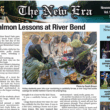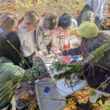In the next few editions, City Link will delight readers with a brand new series on Transportation Planning. Although future editions will jump into the fascinating details of transportation, letís start with an introduction.
The State of Oregon defines transportation as “the movement of people and goods.”
A transportation system includes all the things that move people and goods, such as roads, sidewalks, busses, and trains (but not pipes and electrical lines). As you can imagine, transportation systems are one of the most complicated things to plan. With so many different kinds of roads and bike lanes and trains, someone needs to be in charge of making sure everything runs smoothly. That is why Oregon has an entire department devoted to transportation, called the Oregon Department of Transportation (ODOT). There is also a Statewide Land Use Planning Goal for transportation. And of course, there are related ORSs and OARs.
The Transportation Goal (#12) says that cities and counties in Oregon need to “provide and encourage a safe, convenient and economic transportation system.” How exactly does a community do that? One popular tool that communities use is called a Transportation System Plan (TSP). A TSP helps make sure that all the roads and sidewalks and bike lanes in a community are coordinated.
Certain types of roads serve certain purposes and need to be built and maintained differently. For instance, a street in a residential neighborhood probably does not need four lanes and off-ramps. On the other hand, an expressway probably does not need sidewalks. Because transportation is so important to every day life, it makes sense for a community to locate the most logical places to grow based, in part, on where certain transportation facilities are located and how people can use them. Sure, all of this seems like common sense. But when a community has hundreds or thousands of roads, developing a Transportation System Plan is the best way to stay a few steps ahead of transportation problems (like traffic jams or dangerous intersections).
Next time, City Link will explain who makes these plans and how communities like Sweet Home get a TSP of their very own. If you have any questions about transportation planning, please call 367-8113 or stop by City Hall.




